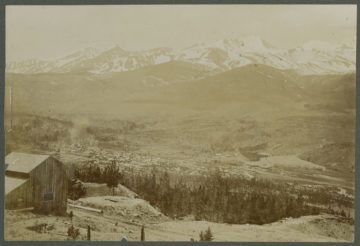by Ethan Seavey

Breckenridge, Colorado: a village in the Rocky Mountains which is now known for its popular ski resort. Before 1859, it was a valley with a lush Blue River running through the crease by the foothills of the Ten Mile Range. In 1859, gold was first mined in Breckenridge. After 1859, over 5,000 white men (some estimate closer to 8,000) flocked to the valley, and the village sprung up quickly after.
Many of those men (for they were nearly all men) had stopped on their way home from the gold rush on the west coast, and others had come from out east. They had experience in mining, which not only meant knowledge of how to effectively collect the gold from the mountains, but that they knew how to survive in the isolated wilderness. In the 1860s, a gold miner from Breckenridge would earn about three dollars a day. Let’s make this clear: three dollars a day was a good amount of money. Many people across America were only earning a dollar, and others had no job. If being a miner didn’t pay well, no one would have come so far to work such a dangerous job. Every day, he would spend one dollar on his boarding, another on food and booze and an hour in a brothel, and send the third home to his family out east.
Mining meant stability at home (usually, back East) when work was hard to find. Still, they weren’t educated enough to learn that they were being cheated. The owner of the claim would take an average of ten dollars of gold from each of his men, every day. The owners lived in nice homes, and some of them never even laid their eyes on the mines. If you could afford it, you wouldn’t be living in Breckenridge. Read more »
